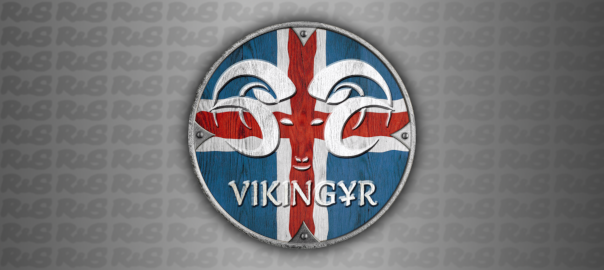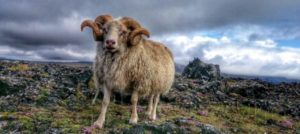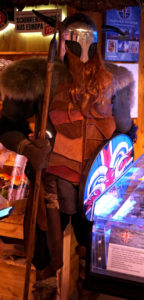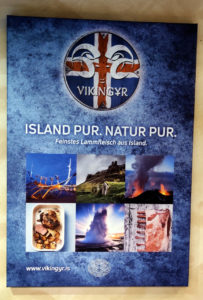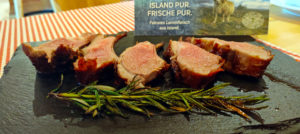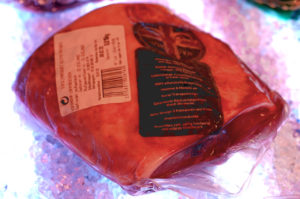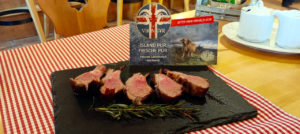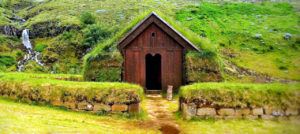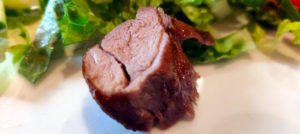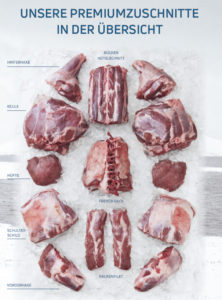VIKINGYR lamb from Iceland is a very speciality. Lamb in itself is tender, but the lambs of this brand, which have all grown up on Iceland without exception, are not only literally “buttery tender”. Their meat also has a high proportion of fatty acids (omega-3), so it doesn’t necessarily have to be fish if you want to eat a healthy diet in terms of fat.
The lamb population in Iceland is currently around 500,000 animals – about twice the human population – which are grazing exclusively on grasses, herbs and berries provided by nature. No hormones, antibiotics, pesticides or genetic engineering are used – the animals live 100% naturally. In the untouched nature of Iceland, there is currently one animal per ten hectares.
The slaughter itself takes place under anaesthesia and the local transport routes are short, thus minimising possible stress for the animals. The Icelandic Inspection and Veterinary Authority – MAST for short – not only monitors the animals all year round, but also carries out continuous inspections during the stunning, slaughtering and cutting of the animals.
MAST is very precise when it comes to importing or exporting animals. Similar to New Zealand or Australia, the main directive is to prevent danger from humans, animals or nature to avert dangers. This sometimes leads to the fact that even Icelandic animals that have taken part in competitions outside Iceland, for example, are not allowed to return to their home country afterwards.
Due to the often-adverse weather conditions in Iceland, only one breed of sheep has been able to really hold its own – today’s Icelandic sheep. Icelandic sheep are purebred and have been for more than eleven hundred years. For the quality of the meat this means continuity. This breed, which belongs to the Nordic short-tailed sheep, was able to withstand the sometimes-low temperatures, strong winds, volcanoes and geysers with its strong fur and will to survive.
This is certainly one of the most important reasons why the natural Icelandic sheep & lamb breeding has the lowest disease rate worldwide. As a rule, the stocky Icelandic ewes give birth to at least twins – but often to more than two lambs. Nature has apparently arranged this to increase the chances of survival despite the harsh habitat, thus securing the population.
The lambs are ear-tagged in March – i.e. shortly after birth – by one of the 2000 small family farms and then released into the wild for a maximum of 6 months. The abrasion of the lambs from the highlands takes place between September and October of the same year. This ensures that the animals are safely kept in the stables before the onset of winter – entire parts of Iceland are “buried” under the snow here. Even if Iceland looks like Tolkien’s floodplain in places, it remains a rough landscape. When it gets increasingly cold in autumn, so all sheep find shelter in the “warm” barn at their respective breeding farms.
The Icelanders are modern, open-minded people, but they still attach great importance to tradition and cohesion. One chance to live this tradition is the so-called Rettir – an important event for Icelandic society – where the family businesses of the island come together and celebrate the departure of sheep and Icelandic horses together. There is a classic folk festival atmosphere – but unlike our colourful carousel worlds – Rettir always means harmony with nature.
Of course, there will also be a toast, the purchase will be sealed with a handshake or you can make music together. There are dancing, traditional games are played and of course not to forget to eat together.
At least all those who are still sufficiently fit after the downforce do this at least. The actual act of the downforce is not an easy one. The mounted breeders, their employees and helpers have to line the way of the drive off for more than 25 km, so that the animals can be driven together – mostly in smaller groups.
The VIKINGYR brand has the lambs cut into premium cuts in France. They cut according to the specifications of the Icelandic professionals and the cut VIKINGYR lamb has a fresh weight of around 9 kg. The meat tastes extremely mild – you would never guess that the fillet is lamb. Even with the leg of lamb, the “typical” lamb taste is hardly noticeable, but no matter which part of the animal is put on the table – everything is tender!
At the VIKINGYR tasting I visited, there was not only the tender filet and the tasty chops, but also the cutlets from the lamb to be tasted. The tenderness of the meat was convincing throughout. Personally, however, I am of the opinion that in comparison a Schnitzel from ESPAÑA ORIGINAL Duroc would be worth more than one try. Apart from veal, I think the “Spanish version” – even if it is not the traditional Viennese Schnitzel – is certainly the tastiest.
VIKINGYR Lamb offers online a whole, cut lamb – have a look at Genusswelt and check the cut. Incidentally, the kilo is currently available in a special offer at around 34.00 euros – which is quite a “snapple” at this quality. The origin of each lamb can be traced, as with any premium meat, from the meat counter to the breeding farm.
Otherwise you can also get the brand at many meat counters at EDEKA & REWE stores (just give them a call-in advance) – it that case of course less than a whole lamb. Try it out in any case – if you like lamb anyway, if not – then especially…!
VIKINGYR lamb on YouTube: https://youtu.be/hdF9J7uFAWI
